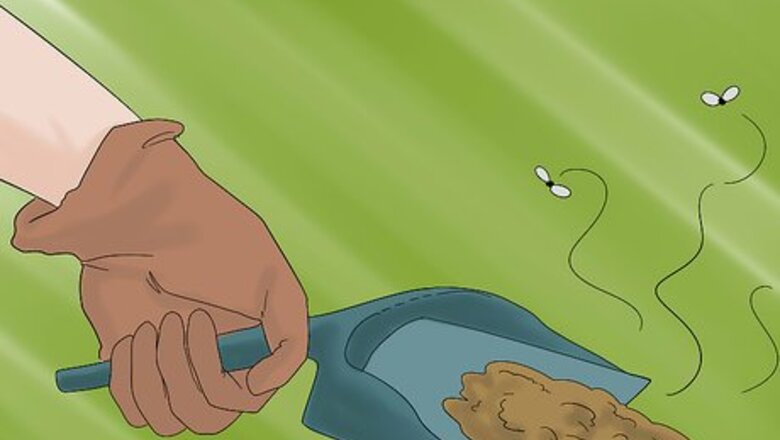
views
Doing Daily Cleaning
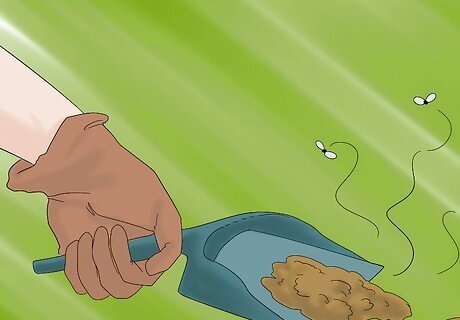
Clean your dropping boards. The dropping boards are the pieces of wood located directly below the chicken roosts. They are designed to catch chicken droppings deposited overnight. You should clean these once each morning. This way, you minimize the amount of time the feces spends on the board before being cleaned. To clean the dropping boards,put some disposable gloves on and scrape the droppings off with a taping knife. You can scrape each board directly into your compose pile, or scrape them all off into a small pail, then dump the pail on your compost pile. If you see poop on the roosts, scrape them clean with your taping knife, too.
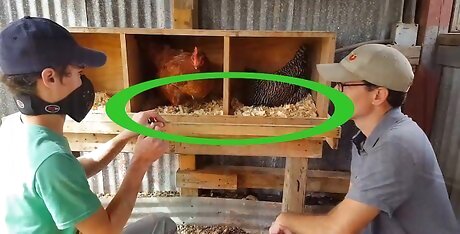
Evaluate the condition of your bedding. If the bedding is visibly soiled or smells bad, you should dispose of it. You can compost your used chicken coop bedding like pine shavings and hay. If your bedding looks generally good and is free of odors, you can simply set it out in the sun where it will naturally dry. The sun will kill also pathogens, bacteria, and mold. You should remove any noticeably dirty bedding every morning.
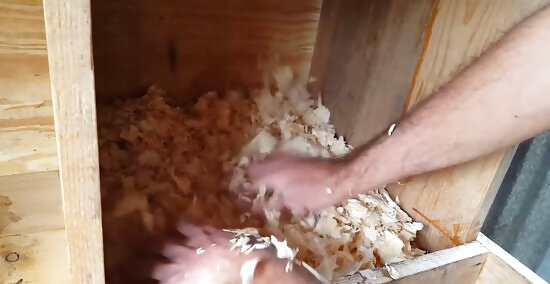
Replace the bedding. Add fresh, clean bedding to the coop. If you simply took the old bedding out and allowed it to dry after removing the badly soiled bits, place the bedding back in the coop.
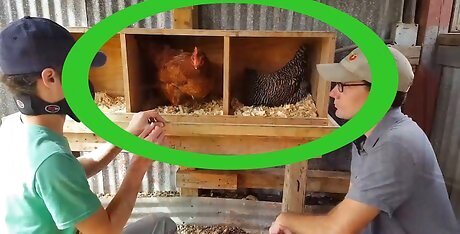
Check the nesting boxes. Evaluate the condition of the bedding in your nesting boxes each morning. Replace any dirty straw or pine shavings. Add new bedding as needed. To keep your nesting boxes clean, make sure they are located at a height which is lower than your roosts. Otherwise, your chickens will roost (and poop) in the nesting boxes. For the same reason, do not position the nesting boxes directly below roosts.
Deep-Cleaning Your Chicken Coop
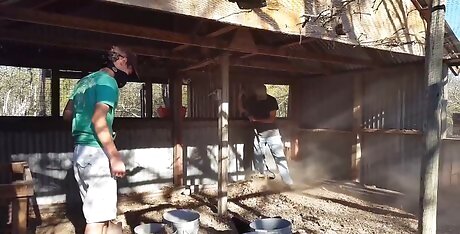
Remove the chickens from the coop. If your chickens are free-range, stick them outside for a bit. If they aren't, put them in a shed or garage of some sort. Chickens cannot fly well, so you shouldn’t worry about your chickens escaping. If your chickens have had their wings clipped, they will be even less likely to fly off. Keep the gate to your yard closed and you should be fine. If you have time, you can take advantage of the opportunity you have to get your chickens out of their cages. If you have a partner, you could ask them to clean the chickens while you continue to work on the coop.
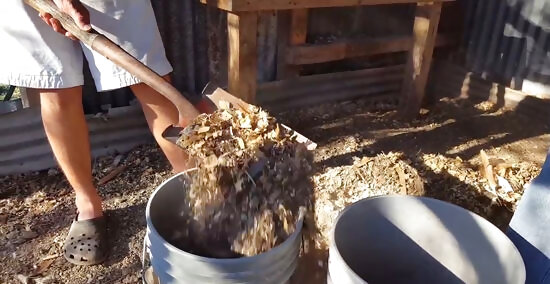
Remove everything from the floor. Bedding, dirt, droppings, and dirt should all be shoveled or raked out. You should also remove all the tools and items which might be in the coop. Your feeder, waterer, nesting boxes, and roosts (if they are removable) should all be removed and wiped down with a nontoxic household cleaner. After taking out all the bedding and other removables, go back over the floor with a broom and sweep out any bits you may have missed. Check the ceiling for cobwebs at this point, too. Use your broom to remove any you see.
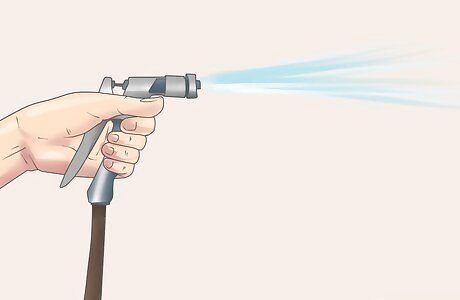
Hose the floor down. Once the bedding and other materials have been removed from the coop, turn a high-powered hose on the floor to wash it out. You could use a power washer, though you don’t need to. Point the hose toward the floor and move it in a back-and-forth motion in order to ensure you’ve applied water to the entire surface. The water will help soften up any manure or dirt that is strongly attached to the floor. Go back over these areas with a paint scraper in order to remove them. Allow the water to drain somewhat. If you have a coop which drains poorly, mop up the rest of the water.
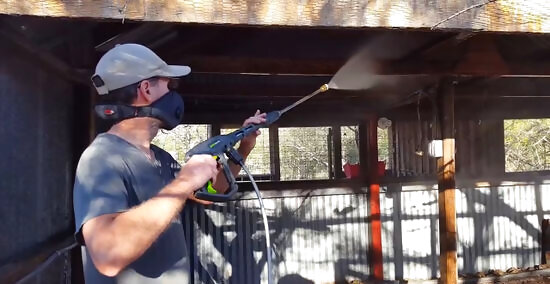
Apply your coop cleaner. Spray or slosh your cleaner liberally across the surface of the floor and give the floor a good scrubbing. Spray it on the walls if you notice spots of grime, droppings, or blood. Use a stiff-bristled brush on the areas you want to clean, and scrub them vigorously with wide, circular motions. Allow the coop to dry by opening all the doors and windows. If the coop cleaner is not draining out properly, use a mop to absorb excess liquid.
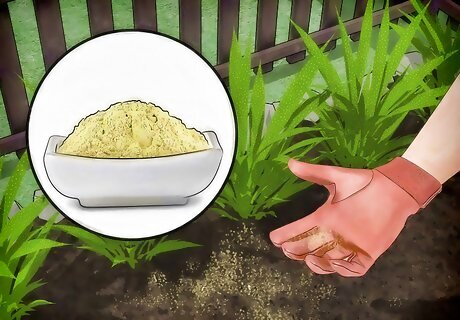
Apply diatomaceous earth (DE) to the floor. DE is a fine powder made of fossilized algae called diatoms, and prevents infestations of ticks, fleas, mites, digestive worms, and other pests. With your coop’s floor dry and clean of feeders, nesting boxes, and other removable objects, sprinkle some DE across the floor of your coop. The amount you’ll need varies with the size of your coop. If you have a large coop, use a large amount. If you have a smaller coop, use a smaller amount. You could sprinkle the DE with a small spoon by scooping some up and then shaking your hand back and forth over the floor, allowing a bit to spill over the edge of the spoon with each shake. Alternately, you could use a duster to apply the DE. A duster sprays the DE out when squeezed, and is useful for getting it deep in the cracks and crevices of your coop. Ensure you use food grade DE. Do not inhale the DE. It can cause inflammation of the lungs.
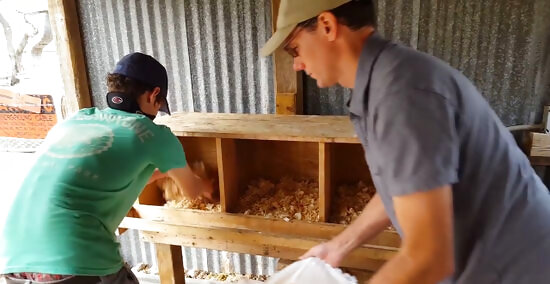
Put down new bedding. New bedding will complete the process of making your chicken coop a chicken home. If you chose to dry the old bedding in the sun rather than discard it entirely, you can bring it back in and replace it on the floor.
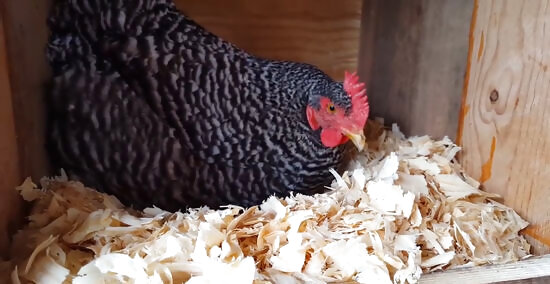
Invite your birds back in. After you've added the bedding, put the rest of the items you removed -- such as the feeder and waterer -- back inside the coop. Refill the food and water if needed. Finally, bring your chickens back inside.
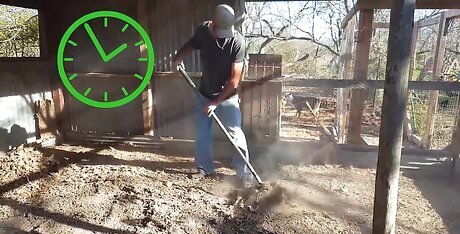
Decide when to clean your coop. While certain maintenance tasks like checking the nesting boxes, dropping boards, bedding should be checked each day and changed as needed, a full-coop cleaning can occur at various intervals. How often you choose to clean your coop top-to-bottom depends on how many chickens you have and how big your coop is. Clean your coop more often if you have many chickens in a small space. You can clean your coop less often if you have few chickens in a big coop. If you detect any foul stink, especially one reeking of ammonia, your coop needs a serious cleaning. Always err on the side of cleanliness when deciding whether or not your coop needs to be cleaned. Some coops can be cleaned as few as three times a year, while others call for cleaning every two weeks. When you get a new flock, clean your coop out before housing them within.
Dressing for Success
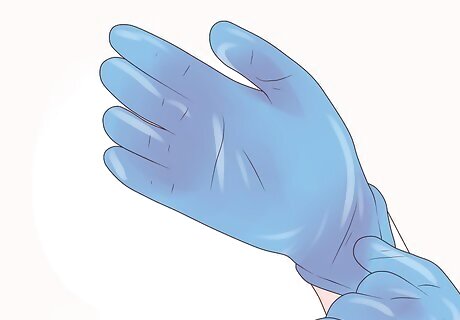
Wear disposable gloves. Cleaning the chicken coop can be a dirty business. You should minimize the chances of touching something yucky by wearing disposable gloves. Not only will this keep your hands clean, but it can minimize your risk for contracting germs and illnesses like Salmonella. Disposable gloves are readily available at most gardening or housing supply stores. Using disposable gloves help reduce the risk of spreading bacteria as gloves are thrown away after use. If gloves become punctured during use, put a new pair on to avoid spreading bacteria. Wash your hands with soap after exiting the chicken coop and removing your gloves.
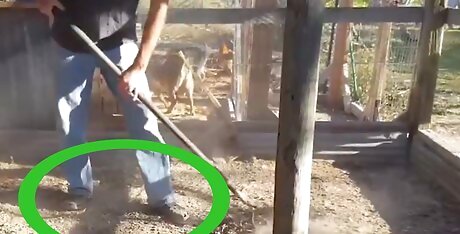
Use a designated pair of shoes for cleaning the coop. You probably already have a pair of shoes you wear only when cleaning the chicken coop. If you do not, select your rattiest pair of sneakers and use them exclusively when cleaning the chicken coop. Remove the shoes just before you step into your house. This way, you won’t track any of the chicken coop grime into your home.
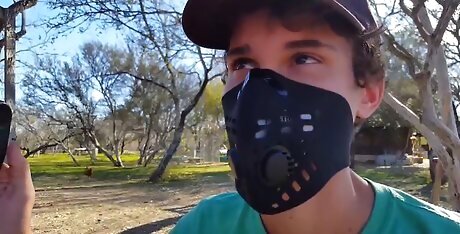
Wear a face mask. Chicken coops can collect dust that you don’t want to breathe in. If your chicken coop is mostly enclosed, the problem is compounded. No matter what type of coop you have, however, you should always put a face mask on when you enter the chicken coop. Ear loop masks of the variety worn by doctors tend to be the most comfortable, and effectively cover both mouth and nose. Prevent dust buildup by providing adequate ventilation for your chicken coop.
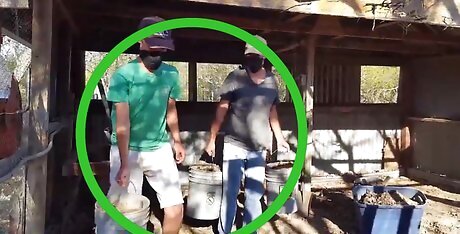
Dress down when cleaning your coop. Wear old shirts and tattered jeans that you don’t mind messing up when cleaning your coop. Since you might be kneeling or brushing against the inside of your chicken coop, you should not wear clothes that you would mind getting grimy, dusty, and gross. After you’ve finished cleaning the coop, change into something clean. Wash the clothes you wore into the coop as soon as possible.
Choosing the Right Cleaner
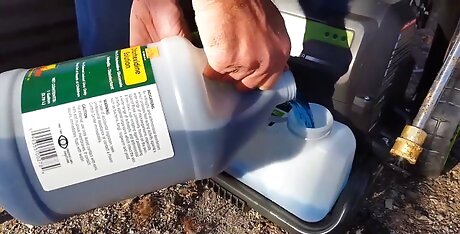
Use a coop cleaner. There are many coop cleaners available. Only use cleaners that are nontoxic and free of ingredients like bleach and creosote. Avoid aerosol sprays as well. Try to find a cleaner that leaves behind a pleasant odor when used. You could choose a cleaner from your local farm supply store specifically designed to clean chicken coops, or you could use a household cleaner. If you mix bleach and ammonia (a primary component of chicken feces), you can create toxic fumes, and irritate the lungs and eyes.
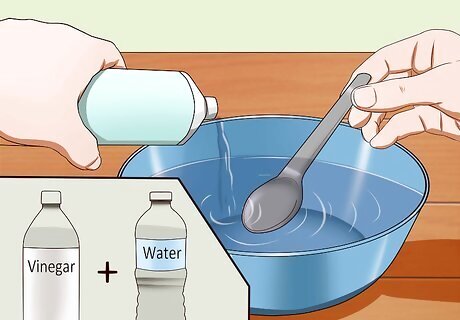
Make your own cleaning solution. There are many varieties of homemade coop cleaner, all of which contain vinegar and water as main ingredients. For example, you could easily create a pleasant-smelling lavender-mint cleaning agent by mixing half a handful of fresh mint, half a handful of fresh lavender leaves and flowers, and half of a vertically-sliced vanilla bean in a standard-size mason jar of white vinegar. Fill the jar with vinegar and stop when it is 1/4 inch from the top. Let the jar sit for three to four weeks, shaking three times every other day. When the vinegar smell has mostly been replaced with a minty-lavender scent, strain the leaves and vanilla bean out and pour the mix into a spray bottle. An even more basic recipe calls for an equal mix of water and white vinegar.
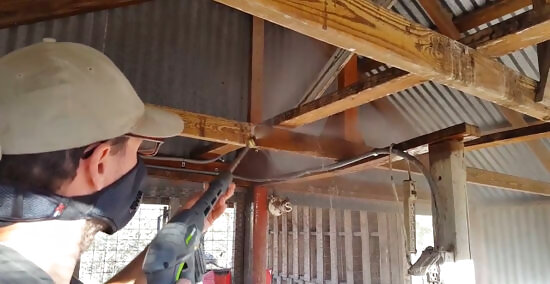
Use a combination of cleaning products. Don’t feel obligated to use just one cleaning agent when cleaning your coop. Different cleaning agents often have different strengths. For instance, one cleaner might do well against poop on the floor, while another might do well against dirt and mud. Try a variety of cleaners in order to find which work best for your coop.




















Comments
0 comment